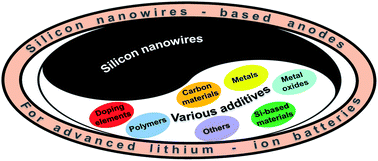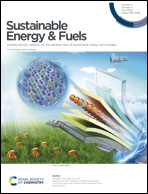A review on silicon nanowire-based anodes for next-generation high-performance lithium-ion batteries from a material-based perspective
Abstract
The lithium-ion battery (LIB) is an efficient electrochemical energy storage device with high voltage, long life, good safety, etc. Silicon has a high theoretical specific capacity (4200 mA h g−1), due to which it is considered a promising anode material for next-generation LIBs. However, the huge volume change (400%) of the Si material during the lithiation/delithiation processes destroys its structure, which greatly reduces the initial coulombic efficiency, cycle stability and rate performance of the battery. Accordingly, constructing nanostructured Si, particularly silicon nanowires (SiNWs), can help to address the above issues. Additionally, it is important to further improve the electrochemical performance by incorporating some additives in SiNW-based electrodes. Therefore, this review focuses primarily on SiNW-based materials as anodes for LIBs from a material-based perspective. Various materials incorporated into SiNW-based anodes through doping or compositing are reported. The electrochemical effects of diverse additives, including carbon materials, metals, metal oxides, polymers, Si-based materials and other special substances, are comprehensively reviewed.



 Please wait while we load your content...
Please wait while we load your content...